Genre: Action Developer: SIMS Publisher: Renovation Players: 1-2 Released: 1991
Sega was an arcade monster throughout the 1980s, releasing a seemingly endless barrage of quality coin-op games. At the same time, it was pumping out conversions and original titles for the Master System and later its Genesis console. With so many titles in the pipeline, some were bound to be left off Sega’s consumer plate, leaving lots of great products to be snatched up by third party publishers. Companies like Sage’s Creation released ports of Sega arcade games like Crack Down, and Telenet Japan’s American subsidiary, Renovation Products, took on a Genesis conversion of the System 24 game Gain Ground. Of course, few of us at the time knew of such licensing deals, especially for games that we never actually got to see in their original coin-op forms. To us, these games were originals developed by their Genesis publishers, and we didn’t learn of their Sega origins until much later.
Gain Ground is one title I wish I had seen in the arcade sooner. It took the established run-‘n-gun genre and breathed new life into it by adding several innovative features to create something with a feel all its own. No one playing Gain Ground likely thought that it was similar to games like Contra or Midnight Resistance given how different its pacing and design were. At its heart, it still had those same roots as its bullet-laden cousins, but it built on that foundation in an entirely new way.
The pacing is much slower than standard shooting fare, and that’s deliberate. Gain Ground drops players into a word in which people no longer have the will to fight and have created the “Gain Ground” system to train and reinvigorate their fighting spirit. When the machine malfunctioned, many warriors were trapped inside, so three brave warriors were sent in to save them and stop the Gain Ground system. The original arcade game clocked in at 40 stages that were divided into epochs (Dark Ages, Middle Ages, Ancient China, and Future). Players could save up to 20 warriors, each with different combat specialties and abilities. The limited RAM of the System 24 chipset meant that the screen couldn’t scroll or display too many large sprites at once, resulting in small characters on a static screen with an overhead perspective. Two players could work together towards saving the Earth (there have been reported sightings of a three-player cabinet), and this entire structure would be carried over to the Genesis.
Players unfamiliar with the original game were perhaps unwelcoming to the Genesis port’s small sprites and slow movement, and that’s understandable on its face. Spending some time with the game revealed how differently Gain Ground played and the need for strategy beyond merely killing everything that moves (though that still remained a big part of the gameplay). Specifically, the key was figuring out who could kill everything most efficiently. To reach the exit at the top of the screen, players had to navigate through each stage’s obstacles and enemies with their rescued warrior in tow. Selecting the right fighter could make this process much simpler. For instance, along with the enemies on the ground, some were perched high above, raining fire down. It paid to have a warrior with the ability to hit them. Some warriors moved more quickly than others, which also made combat more complicated. It only took a single hit to kill any character and having a fast one killed meant reaching the exit with essentially an armed tortoise. Dead characters left behind were lost forever, so it was important to take their little icon to retain them in the party. Should both perish, they were gone.
Thus, the bulk of Gain Ground’s strategic requirements rested in knowing who could hit the enemy and who was fast enough to navigate the battlefield. There was quite a variety of skills among them. Some, like Athra, could fire quickly but only at a short range. Others, such as Betty, were faster and could lob grenades over structures while moving. It wasn’t uncommon to pick an “A-team” of sorts, that could be used through many of the stages, and it was disappointing to see them fall. Never leave a soldier behind! Unless, of course, there was too much shooting to make it worth the effort.
And there were a lot of stages filled with all kinds of nastiness to make navigating a challenge. Retaining the same kind of presentation as its source material, the Genesis port one-upped its arcade sibling by adding a fifth, modern epoch with 10 extra levels. All the different eras varied in style, with everything from meadows to city streets and futuristic structures. Beyond the tiny sprites, the environments had decent detail, enough to know what was going on but nothing especially noteworthy. The visuals were functional, and while I do admit that the Genesis version looks a bit darker and less detailed than the arcade game, I recognize that the original wasn’t overly attractive to begin with.
I found the music to be exceptional, though. It compensated for the simple sound effects, but it also provided the perfect atmosphere for each stage. The soundtrack had some great themes, including a few I added to my playlist. They varied in style and pace, doing a great job to mark the differences between the epochs.
I think that most players didn’t give Gain Ground a chance, a problem the coin-op game faced as well. The simple visuals and slower gameplay probably turned people away, and they really should give it another chance. The stages in the Genesis version were not as large as the large arcade screen made them, but they didn’t feel squashed. Control was solid, and the presentation did a great job overall of bringing the experience to the small screen. There was enough variety in the combat and environments to make Gain Ground a great two-player experience and a fun way to spend an afternoon. What else can one hope for?
SCORE: 10 out of 10

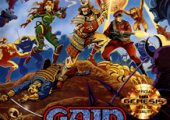
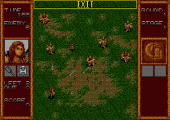
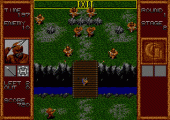
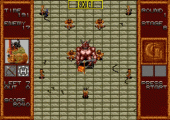
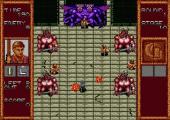
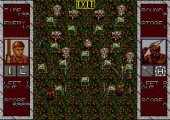
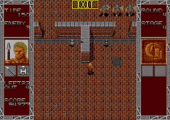
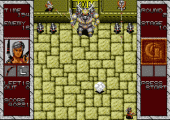
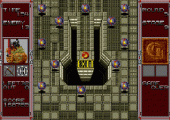
Absolutely terrific game that represents one of the real high points in the Genesis library. It’s challenging, has loads of replay value, and is fun as hell (especially in co-op mode), with a great mix of strategic and action-oriented gameplay. Since I’m not bothered by the lo-fi graphics or the middling (but inoffensive) music, it gets 10/10 from me.
For a game where the graphics look this bad, this thing is surprisingly fun. The gameplay is pretty addictive and you’ll have a hard time putting it down once you get a feel for the game. The music is almost as bad as the graphics though, so eventually you’ll get the urge to turn the volume down, or mute it completely. Despite the graphics and lame music this game is somehow still decent. Definitely not a 10, but still inexplicably addictive fun. 7/10 from me.
Protip: Play on Hard mode and you’ll get all 20 characters to start.